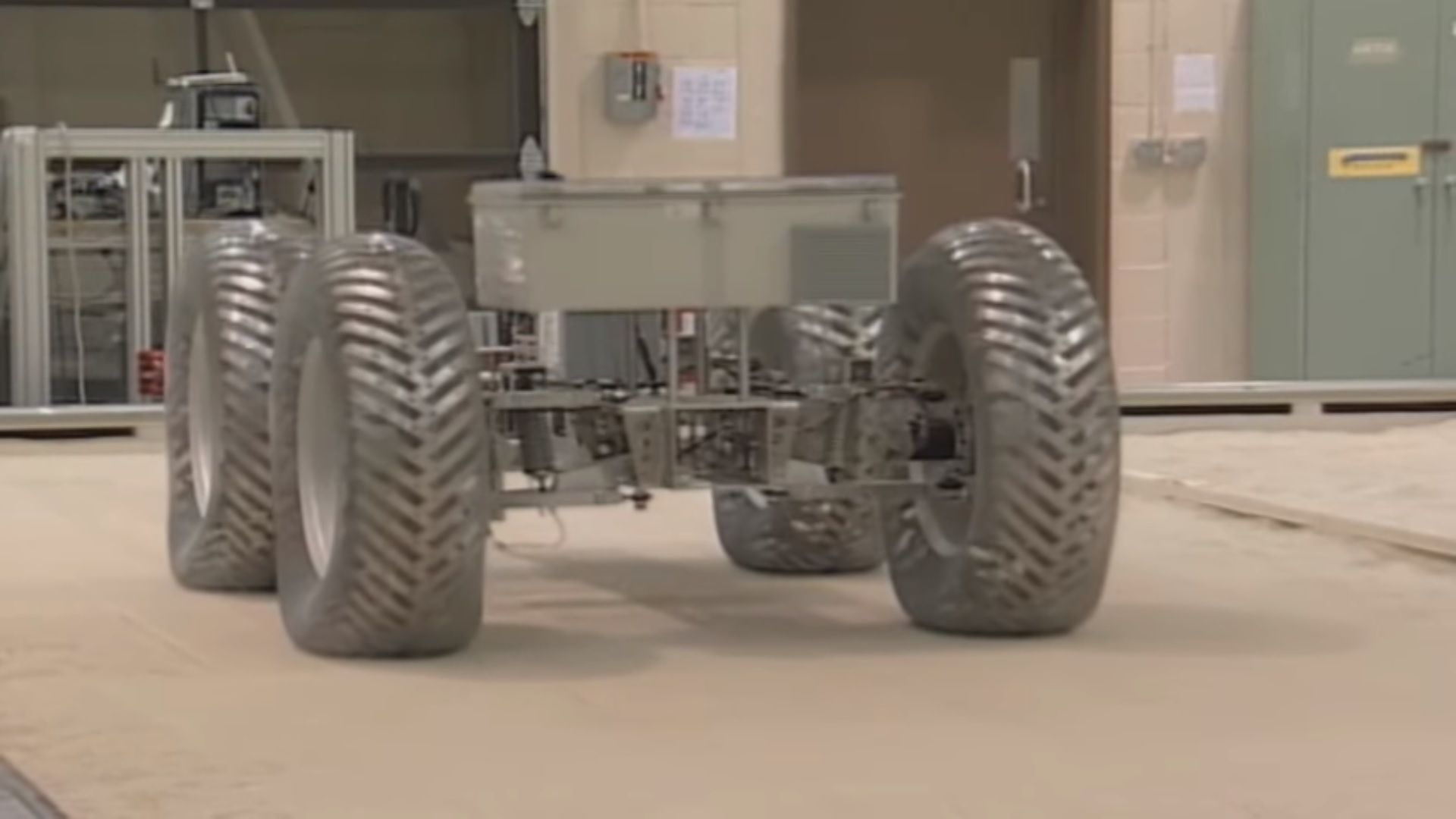NASA has had its fair share of discoveries in its lifetime, be it a new star, new constellation, or even a new galaxy. But as incredible as these discoveries are, the space agency has yet to discover the exact science of building a set of tires that it can withstand the rigors and space exploration. It’s probably still a few years away from finding that breakthrough, but the agency recently took a big step on that front by developing a high-tech set of airless tires that can deform itself when needed, and spring back to its original shape without even breaking a sweat.
New discovery points the way to handling rough space terrain
On the surface, it sounds ridiculous to hear NASA consume itself on the development of tires. Shouldn’t it have far more important matters to concern itself with? Maybe search for habitable planets? Perhaps reach out to extra-terrestrial species?
But like our ancestors before us who had to slowly discover ways to live on this planet, our knowledge of outer space is still limited. We take something like tire-development for granted because we’re well past the point of having to reinvent the invention itself. But the thought of developing a specific set of wheels that can endure heavy use in an extraterrestrial environment is a different matter entirely.
If it were easy, NASA’s past space-bounded rovers wouldn’t have been plagued with repeated puncture problems every time to go on their space explorations. But nothing about space is easy, which is why NASA is keen to solve this problem. The decision to use a stoichiometric nickel-titanium alloy looks like a step in the right direction. According to NASA, the material itself can be woven into interlocking coils, allowing it to deform all the way down to its wheel hub when it's driving on rugged extraterrestrial surface conditions and then spring back to its original shape once the surface levels out. The development helps solve one of the biggest issues that plagued the steel mesh tires that were used on past Mars rovers. Those tires often got punctured when subjected to heavy use, compromising the rovers’ task of exploring the surface of the red planet.
It’s too early to say if this new development is the answer NASA’s been waiting for, but recent tests have shown been impressive enough that NASA itself decided to build a full-size mock-up so it can test it on actual earth-bound cars. Is this magic alloy the answer to NASA’s problem? It’s hard to say that it is or could be, but it is a development. NASA’s going to take those any way it can get them.

